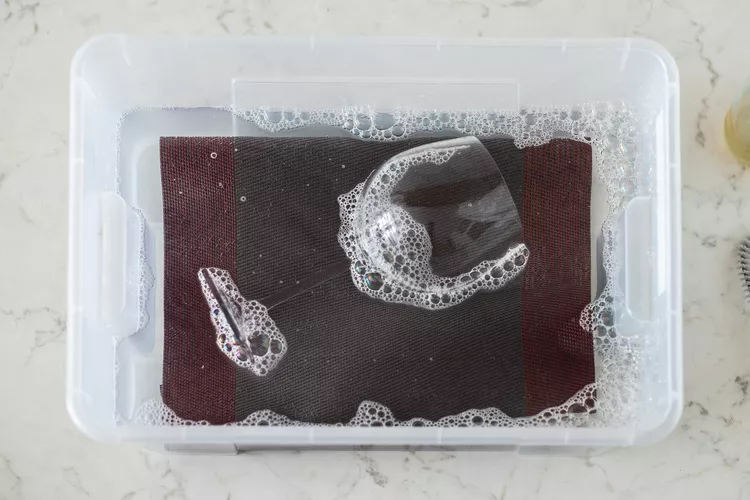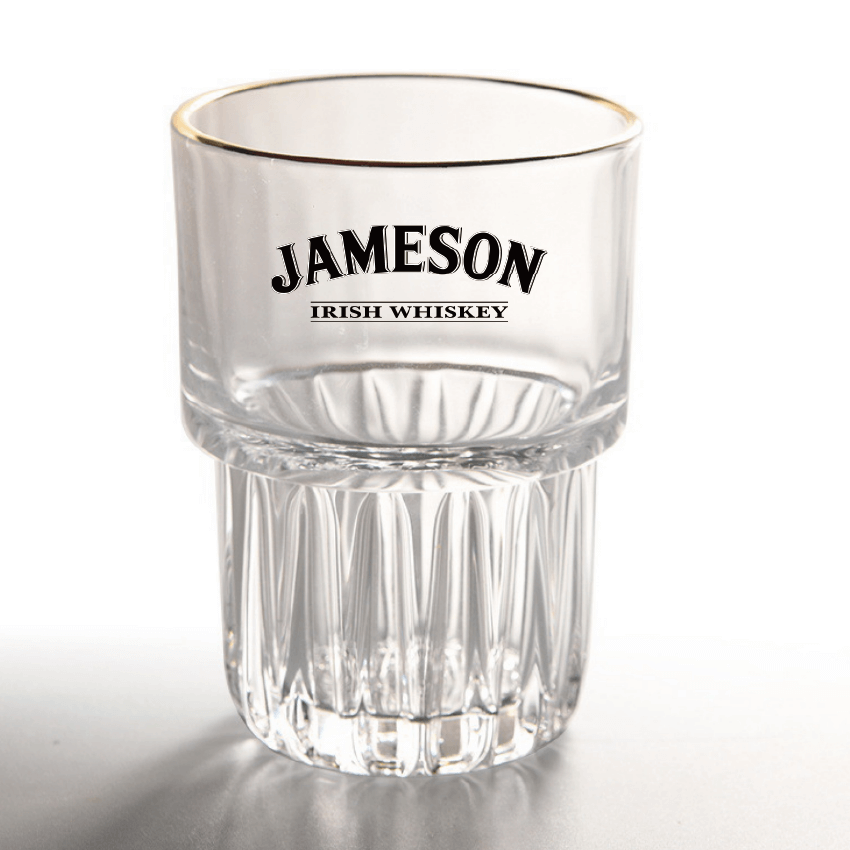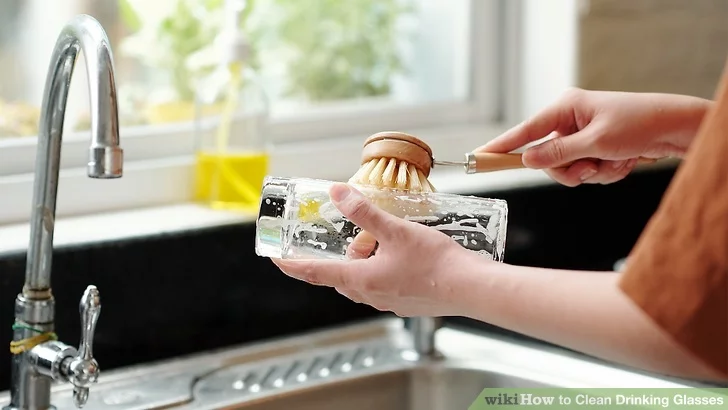Sterilizing glass cups is an essential practice for any household or business desiring to maintain optimal hygiene. Whether you’re a family striving to keep the kitchen germ-free or a restaurant prioritizing customer health, knowing how to sterilize your glass cups is key. This quick and easy guide will walk you through the straightforward sterilization steps to ensure your glassware is not only sparkling clean but also free from any harmful bacteria. Dive in to discover how a simple process can elevate your drinking experience, offering peace of mind with every sip!
Essential Tips Of Preparation to Sterilize Your Glass Cups
Keep these crucial considerations in mind before you embark on the process to sterilize glass cups, ensuring both safety and effectiveness.
Do not Boil Other Accessories Except Glass Cups
Never boil other accessories, like metal lids, wood lids, rubber sealing rings and so on. Instead of complete immersion in boiling water, which could destroy the rubber ring and lead to a broken seal, opt for a gentler approach. Submerge the lids and rings in simmering water for ten minutes to ensure thorough cleaning without compromising the fit. Using water that has slightly cooled after sanitizing the glass cups works well too. This careful handling preserves the integrity of the seal, preventing potential contamination of your cup’s contents.
source:lida
Make Sure You’re Cleaning in a Clean Spot
If you’re sterilizing glass cups, you gotta make sure the area you’re working in is clean too. If it’s not, those freshly cleaned glasses could catch germs from around the place. Planning on drying the cups on dish towels? Check that those towels are clean first.
And here’s a tip: if you can, can your preserves right after you sterilize the glasses. If you leave them out for an hour or more, you’ll have to sterilize them all over again before using. Oh, and don’t mix hot drinks with cold cups or cold drinks with hot cups. That’s a no-no.
Use Oven Mitts, Trust Me
When you’re sterilizing glass, things get hot – real hot. So, you gotta be careful when handling those glasses. Slip on some oven mitts to keep from burning yourself. And hey, if you’re thinking about going big-time as a wholesaler, think about using pick n place robots in your factory. Those little gadgets take away the risk of burns and can even save you some money. How cool is that?
source:lida
Cleaning Your Glass Cups
Before you sterilize your glasswares, you must clean them first. Here is the daily routine for quick cleaning.
Fill the sink or a basin with some warm water, add a little dish soap, and swirl that cup around in there. Don’t forget to get around the edges and the handle. You’ll have that cup cleaned up in no time. Dry it off with a clean towel or let it air dry on a rack.
source: The Spruce
But sometimes, there might be more problems that you can’t handle. Like stains, calcium buildup and how to make glasswares shine? Let’s show you how to solve them:
Stain Removal Ever had those stubborn tea or coffee stains that just won’t budge? Trust me, they’re not there to stay. Grab some baking soda, sprinkle it on the stain, add a little water to make a paste, and scrub it gently with a soft cloth. You can also use a bit of vinegar if it’s a tough one. Rinounce it off, and boom! The stain’s gone. Easy-peasy, right?
source:simple life home
Calcium Buildup Now, calcium buildup, those annoying white marks, might look like they’re there to stay, but they’re not. Fill your glass with equal parts water and vinegar and let it sit for a bit. Then, scrub with a gentle brush, and those marks will vanish. If it’s super stubborn, try soaking it overnight. It’s like magic – the calcium buildup just disappears!
Polishing Now, the finishing touch: polishing. Want to make those glasses shine like they’re brand new? You’ll love this. Get a soft, lint-free cloth, maybe a little vinegar, and just rub it on the glass. Go in circles, get all the sides, and don’t forget the bottom. It doesn’t take long, but oh boy, the shine you get is something else! Your glasses will look like they just came out of the store.
source:the spruce
You can know more in details: How To Clean Wine Glasses?
How To Sterilize Your Glass Cups
Sterilizing your glass cups, huh? Now, that might sound all scientific and fancy, but it’s actually pretty straightforward. Whether you’re a health nut or just want your cups extra clean, sterilizing is the way to go. Here’s how you can do it right in your own kitchen:
The boiling method might seem like a lot of steps, but it’s really quite simple once you get the hang of it. It’s a tried-and-true way to make sure your glasses are not only clean but also free from any nasty germs. Perfect for everyday use or when you want to go that extra mile for special occasions!
1. Pick the Right Pot Find yourself a big pot, big enough to fit all the glasses you want to sterilize without them being all cramped and touching each other.
2. Preparing the Glasses Give those glasses a good wash with soap and water first. You want to start with clean glasses to make sure the sterilizing does its job.
3. Laying Down a Towel or Rack You might want to put a folded towel or a metal rack at the bottom of the pot. Why? It helps prevent the glasses from cracking or breaking as they bounce around in the boiling water.
4. Filling and Positioning Fill that pot with cold water and place your glasses in there, making sure they’re completely submerged. Position them so they don’t knock into each other.
5. The Boil Turn up the heat and bring that water to a good rolling boil. Once it’s boiling, let those glasses dance in there for about 10 minutes. This is where the sterilizing magic happens!
6. The Cool-Down Turn off the heat and carefully use tongs or oven mitts to take the glasses out. You might want to let the water cool down a bit first if you’re not in a hurry.
7. Drying Place the glasses upside down on a clean, dry towel or a drying rack, letting them air dry. You want to avoid using a dish towel to dry them, as it might introduce new bacteria.
8. Storing Once dry, store your newly sterilized glasses in a clean cabinet, ready for use.
Oven Method
The oven method is a fantastic way to sterilize your glass cups, especially if you’re not a fan of boiling. It’s efficient, effective, and something you can easily incorporate into your cleaning routine.
1. Preparing the Glasses Start with clean glasses. Give them a good wash with warm soapy water and rinse them thoroughly.
2. Preheating the Oven You’ll want to preheat your oven to around 250 degrees Fahrenheit (120 degrees Celsius). That’s the sweet spot for sterilizing.
3. Prepping the Oven Rack Arrange your oven racks to ensure there’s enough space for the glasses to stand upright. You can also use an oven tray lined with a clean towel to prevent the glasses from sliding.
4. Dampening the Glasses Make sure your glasses are still a bit damp. The moisture helps in the sterilizing process, creating steam as they heat.
5. Placing the Glasses in the Oven Place the glasses upright on the rack or tray, making sure they’re not touching each other. Give them room to breathe!
6. Baking Time Let those glasses bake in the oven for about 15 minutes. The steady, dry heat of the oven does the sterilizing job nicely.
7. Watching the Clock Keep an eye on the time, and don’t be tempted to crank up the temperature to speed things up. Slow and steady wins the race here.
8. The Cool-Down Once the time’s up, carefully take the glasses out of the oven, using oven mitts, of course. Or you can turn off the oven and let them cool down inside slowly.
9. Handling with Care Be gentle when taking the glasses out, as they’ll be extra sensitive to temperature changes. Avoid placing them on cold surfaces right away.
10. Drying and Storing Let the glasses air dry, then store them in a clean cabinet, ready to shine at your next meal or gathering.
Microwave Method
The microwave method’s a winner when you want to get those glasses sterilized in a jiffy. It’s all about the boiling water, the microwave magic, and a little TLC in the handling department. Give it a whirl next time you’re in a hurry, and you’ll have sparkling clean, sterilized glasses ready to go in no time.
1. Wash Those Glasses Give your glass cups a good scrubbing with soap and water. You want to start with clean cups, so make sure to rinse ’em well.
2. Get Them Wet Fill each glass cup about halfway with water. This is the secret sauce that helps with the sterilization.
3. Plate It Up Place a microwave-safe plate in the microwave. You’ll be putting your glasses on this, so make sure it’s big enough.
4. Arrange the Glasses Carefully place the glasses filled with water on the plate. Make sure they’re steady and not wobbly. We don’t want any spills!
5. Microwave Magic Time Pop ’em in the microwave and set the timer for 1-2 minutes. You want the water in the glasses to reach a full boil.
6. Ding! Time’s Up When you hear that microwave “ding,” carefully open the door. Those glasses will be hot, so watch out!
7. Let ‘Em Sit a Bit Give those boiling glasses a minute or two to cool down inside the microwave. No rush here.
8. Careful with the Handling Using oven mitts or a thick towel, carefully take the glasses out of the microwave. Remember, they’re still hot, so handle with care.
9. Pour and Dry Empty the hot water from the glasses and set them upside down on a clean towel to air dry.
10. Store and Enjoy Once they’re dry, stash your freshly sterilized glasses in the cabinet, ready for some serious sipping.
Chemical Sterilizing
Chemical sterilizing is a fantastic way to get those glasses squeaky clean and free from any baddies.
1. Choose Your Chemicals There are specialized chemical solutions made for sterilizing glassware, like iodine or chlorine solutions. Pick the one that’s right for you and follow the instructions on the bottle. Remember, safety first!
2. Wash ‘Em Good Start by washing your glasses with soap and water. Rinse ’em thoroughly so there’s no soap left.
3. Prepare the Solution In a large basin or sink, mix the chemical sterilizing solution according to the instructions on the packaging. You’ll want to make sure it’s the right concentration. Too weak, and it won’t work; too strong, and it could damage the glasses.
4. Soak It Up Submerge your glasses in the solution, making sure they’re completely covered. No half-dipping here! Let them soak for the time specified in the instructions.
5. Give ‘Em a Swirl Every now and then, give the glasses a gentle swirl in the solution. This helps the sterilizing magic get into every nook and cranny.
6. Time to Rinse After soaking, you’ll need to rinse the glasses with sterile or boiled water. You don’t want any chemical residues lingering around.
7. Air Dry Those Beauties Set the glasses upside down on a clean, dry towel. Let them air dry so there’s no chance of contamination with regular towels.
8. Keep ‘Em Safe Once they’re dry, store your sterilized glasses away from dust and grime. You’ve worked hard to get them clean, so keep ’em that way!
9. Safety Check Always follow the safety instructions for handling and disposing of the chemical solution. Gloves and eye protection might be a good idea too.
Above are the all details for How To Sterilize Your Glass Cups. If you have more ideas, please inform us!
Conclusion
Recycling glass cups is indeed a fantastic practice that benefits both the environment and your wallet. By giving a second life to used glassware, you’re playing a part in cutting down on waste and conserving resources. It’s a green, smart move that we can all cheer for!
If you’re in need of quality glassware, whether for personal use, your business, or to kickstart your recycling efforts, Lida Glassware is your go-to partner. With a wide variety of food-grade glass products tailored to suit diverse applications, we ensure top-notch quality and design.
Our commitment doesn’t stop at providing exceptional glass products. We understand the importance of sustainability, and our team at Lida Glassware works relentlessly to align our practices with eco-friendly standards.
So, the next time you’re in search of reliable, stylish, and environmentally sound glass cups, remember that Lida Glassware is here to meet your needs. Together, we can embrace a future that’s not just sparkling clean but green as well. Explore our offerings, and let’s make a positive impact, one glass at a time!














